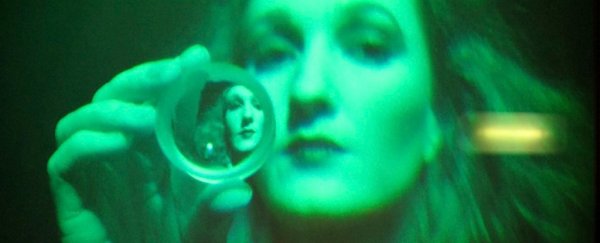A new technique for recording image information onto a surface creates the ability for one space to contain multiple holographic snapshots, depending on how you look at it.
With this new research, cramming numerous holograms without loss of resolution on the same material could open the way to some fascinating new applications.
Holograms have been around for over half a century, serving as art, entertainment, and foils to counterfeiting. It's been a hard and fast rule that no matter which way you view a hologram, the same object would appear in three dimensions. Until now.
A team of physicists and engineers from Caltech has come up with a clever method for etching a material so it can bounce incoming light in two different ways, creating distinctly different holograms that depend on the angle the material is viewed.
Squeezing multiple pictures onto the same material is pretty old hat now. Just think of the now old-fashioned 'lenticular prints' that cheaply adorn things like toys, postcards, and stationery materials.
Tilting such pictures can hide and reveal images, turning a simple picture into a short animation. But to make them work you need to sacrifice half of the image's resolution as the lens exposes and hides alternating strips of pixels.
"Previous attempts to encode two images on a single surface meant arranging pixels for one image side by side with pixels for another image," says physicist and team leader Andrei Faraon.
To achieve a similar effect with holograms without losing detail, the researchers developed a special metamaterial out of silicon oxide and aluminium.
The result was a forest of tiny pillars (or posts), each just a few hundred nanometres tall.
Changing the physical properties of the pillars, such as their shape and exact size, changes the way the metamaterial reflects incoming light.
By manipulating these properties the researchers found they could turn each pillar into a binary information source that depended on the angle of the light source.
Viewed from one extreme, a pillar could effectively be an empty pixel, or a black dot. From another, the same pixel could provide information that is relevant to reflecting light that can then interfere with other waves – producing a hologram.
"Each post can do double duty," says Faraon.
"This is how we're able to have more than one image encoded in the same surface with no loss of resolution."
Technically, the process could capture three or more images. There would be a practical limit, however, which the researchers hope to explore further.
While it's not hard to imagine uses, right now there's no immediate application for the discovery. Which might be a good thing as precisely planning and arranging the pixels is still pretty labour intensive.
With advances in virtual reality and other entertainment technologies showing there's a desire for pushing the limits on 3D visuals, no doubt we'll be seeing further interest in the art of holograms.
This research was published in Physical Review X.
